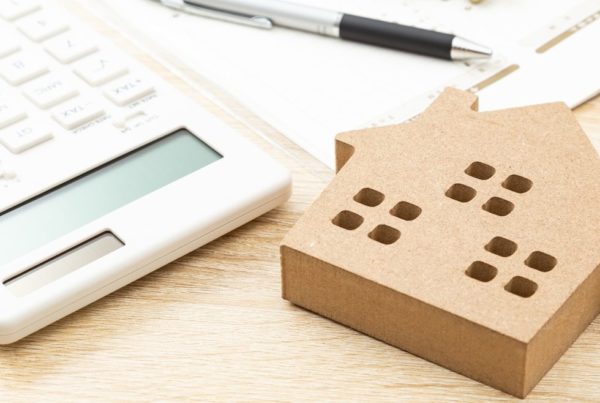Refinancing or entering into a new home loan? Any opportunity to lower your interest payments will likely appeal to you; you may already be comparing the benefits of an offset account Vs redraw facilities.
Both options can benefit you by helping to reduce interest and potentially paying off your home loan sooner.
The major differences relate to accessibility of your savings, flexibility of their use and how much financial know-how is required to maximise the benefits of the account.
In this comprehensive guide you’ll learn key information about offset accounts and redraw facilities, their similarities and their important differences, and how to choose what’s right for your mortgage situation.
Differences Between Redraw and Offset Account
An offset account is a separate account, where a redraw facility is a feature attached to your existing loan.
Both options allow you reduce interest payments on your home loan balance and access the additional repayments you’ve made. One of the main differences being how often and how easily you’re able to access those funds.
An offset account allows you to save thousands on your home loan. It is essentially a transaction account allowing you to keep money in your offset account whilst also being able to use the money as and when you need it.
On the contrary, a redraw facility is a feature of some home loans that allow you to make an extra repayment when you wish, allowing you to save money while reducing the interest payable on your overall loan. You can redraw funds if you desire, though some barriers may exist depending on your lender, which can be beneficial to those who want to reduce the temptation to spend impulsively.
Are There Any Similarities
Between the Two?
When comparing a redraw Vs offset account, note that there are some key similarities:
Both allow you to use your savings to reduce the amount of interest paid on your loan balance
Both can be available on a standard variable loan
Both provide an opportunity to pay your loan home off earlier
Both have potential tax implications should you decide to rent out your home in the future
To fully understand what each option offers, let’s take a closer look into the features of each:
Redraw Facilities Explained
A redraw facility is a feature attached to some home loans that allows you to access extra repayments they have made above the required minimum. You can then ‘redraw’ the extra money if needed.
Pros:
- You can access additional payments made on your home loan
- Funds may take longer to access, which may mean less temptation to spend
- Most standard variable loans will have a redraw facility option
- Usually less or lower fees compared to offset account, but you should check with your lender
- Actively pays down your mortgage, allowing you to clear your home loan sooner
Cons:
- Some lenders may have a minimum redraw amount
- Less flexibility in accessing your money and how much you can access, which could take 1 – 2 business days
- Your lender may have a maximum number of redraws allowed
- If you choose to rent out your home in the future, you may not be able to claim any portion of the loan you have redrawn for non-investment purposes
Offset Accounts Explained
An offset account is a transaction account linked to a home loan. The money in this account is ‘offset’ against the balance of your home loan, reducing the amount of interest charged on the loan. Where a lender offers multiple offset accounts against a single loan, the combined value of your funds is offset against your loan.
Home loan interest is calculated on your loan balance minus the amount kept in your offset account. The higher your offset account balance, the lower your interest repayment will be. Let’s say you have a $750,000 home loan balance, with $60,000 in your linked offset account: in this case you would only be paying interest on $690,000. You will pay the same amount each month, but a bigger chunk will go towards principal rather than interest, meaning you should be able to pay off your home loan faster.
Pros:
- Can be used as an everyday transaction account, giving you access to your money instantly
- If your lender allows multiple offset accounts, you may wish to use one for everyday spending, another for savings and so on to manage your finances, and commit these accounts to debit cards
- Withdrawals may not affect the tax deductibility of interest charged on your loan
- Interest saved through an offset account is not considered income, so is not taxable
Cons:
- Fees for offset accounts may be higher – however lenders such as Homestar Finance do not charge offset account fees
- Withdrawing money for everyday spending will reduce the offset account balance, meaning less of a reduction in the loan balance your interest is calculated on
- May not benefit you if your offset account balance is consistently low
- Offset accounts may only be available with certain home loan products
Can You Have an Offset Account and a Redraw Facility?
Yes, you can.
Consider which of these statements aligns with your goals:
I want to reduce interest while still accessing my money
I want to reduce interest while still accessing my money
If both statements hold equal weight, you may want to consider a home loan that offers both offset accounts and redraw facilities. In some cases, combining the benefits of both can optimise financial outcomes.
For example, borrowers could use the offset account for everyday transactions and budgeting, while the redraw facility acts a reserve for extra savings and unexpected costs.
You should factor in account fees, redraw fees, management fees and your lender’s policies. Using both features requires financial discipline and planning to ensure that funds are well allocated and savings goals are met.
Does a Redraw Facility Reduce Interest?
Yes.
Extra repayments made into a redraw facility reduce interest in the same way that funds in an offset account do; you pay interest on your home loan balance minus the surplus payments made into your account.
Meaning your repayment amount is the same, but more of the money go towards paying the principal of the loan.
You can calculate your potential interest savings using this home loan offset calculator.
With your loan principal being paid down faster, you can not only save on interest but also shorten the overall term of your loan, reaching full repayment sooner.
Choosing What’s Right for Your Home Loan Situation
While the flexibility of offset accounts allows for money to be accessed easily, some people may see this as a disadvantage. Those who wish to remove the temptation to spend the funds because they are saving for something in particular such as a renovation, may opt for a redraw facility instead.
Both an offset account and a redraw facility offer substantial benefits in reducing interest payments and shortening the loan term, though they cater to different needs.
Which is best for you depends on your priorities; would quick, easy access to your savings benefit you, or would the restriction of accessing redraw facility funds help you reach your long term goals sooner?
This information is general in nature and has been prepared without taking your objectives, needs and overall financial situation into account. For this reason, you should consider the appropriateness of the information and if necessary, seek appropriate professional advice.
Get more than a better deal with Homestar Finance.
For great rates, great savings and great service, Homestar Finance has you covered. Fill in your details to connect with a dedicated lending specialist who will guide you through your refinancing options









